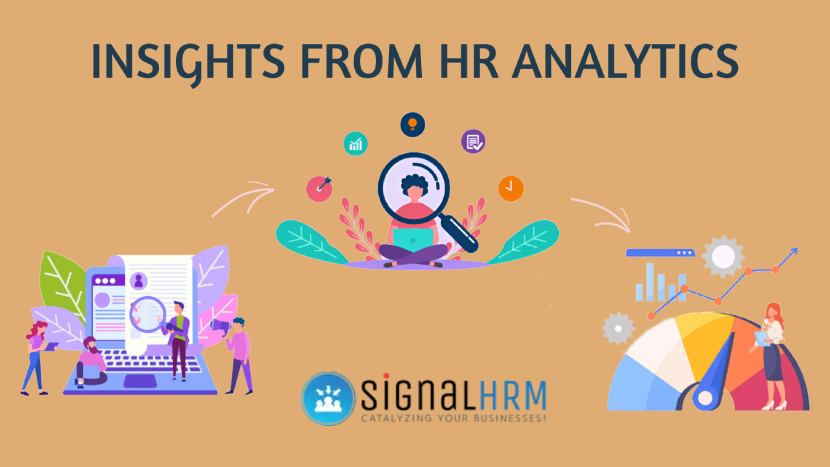
HR analytics includes collecting, analyzing, and reporting HR data to gauge the effectiveness of HR metrics on the company’s performance. This data-driven approach helps the HR department to make informed decisions.
The HR data analytics allow the HR department to optimize HR functions and enhance employee engagement. Organizations need to manage people knowledgeably to ensure they are happy and work progressively during their employment tenure.
By leveraging data analytics, the HRs can set performance baseline based on the current projects and organization’s objectives. Further, they can analyze and find out where their organization stands for the metrics that are important to it. Based on these observations, the HR team can draw conclusions and come up with solutions to overcome the problems. The next step is to put a process change into effect to assess the validity of the proposed solution. Track the results to evaluate the influence of the changes made.
Important KPIs in HR Analytics
Every HR department has key KPIs that helps them assess different parameters. For example, an organization may need to check the engagement and satisfaction amongst its employees, while others want to check the retention and attrition rate. Some of the key KPIs include:
Hiring Time Period: It is a measure of the average time that is taken to hire a new employee (beginning from the job posting till an employee accepts employment offer). The hiring time period is calculated by adding time spent to hire a new employee divided by the total number of recruits in a specific time interval.
Employee Turnover Rate: Employee turnover rate measures the percentage of employees who exit an organization over a specific time period. It measures stability of workforce and offers insights into different aspects such as employee satisfaction, workplace environment, and leadership skills.
Turnover Rate=( Average Number of Employees during the Period/ Number of Employees Departed during the Period )×100
Total Hiring Cost: The total hiring costs refers to the sum total of all the expenses such as cost of advertising a job, time taken to interview a candidate, and the recruiter’s time.
Absenteeism: Absenteeism refers to the total amount of time the employees are absent from work irrespective of the reason such as sick days, vacation, and others.
Revenue per Employee: Revenue per employee can be calculated by adding the income of company divided by the total number of employees.
Employee engagement: Employee engagement helps you to track the engagement levels of an employee. For example, you can ask your employees to fill feedback forms to score their working experience. Further, you can calculate the average of this data to find the degree of employee engagement.
Predictive Analytics in HR
Predictive analytics enable the organizations to anticipate specific insights that they can expect in future and streamline their operations accordingly. Some of the use cases are:
1. The HR can use predictive analytics to find the attrition rate for the next two years depending on the historical patterns with the help of existing data. Further, they can use this information to engage and retain employees.
2. The HR professionals can assess the performance of employees by keeping a track of different processes. This makes it easy to find areas that need improvement and schedule training sessions accordingly.
3. It helps the organization leads to discover the skill gaps and determine if they need to hire new candidates or upskill the current employees.
In a nutshell, HR analytics enable the HRs to find the current performance and efficiency of an organization along with the approach that will help to enhance business operations. SignalHRM covers all the important KPIs and gives meaningful insights by gathering data from different sources. Connect with us to know more.